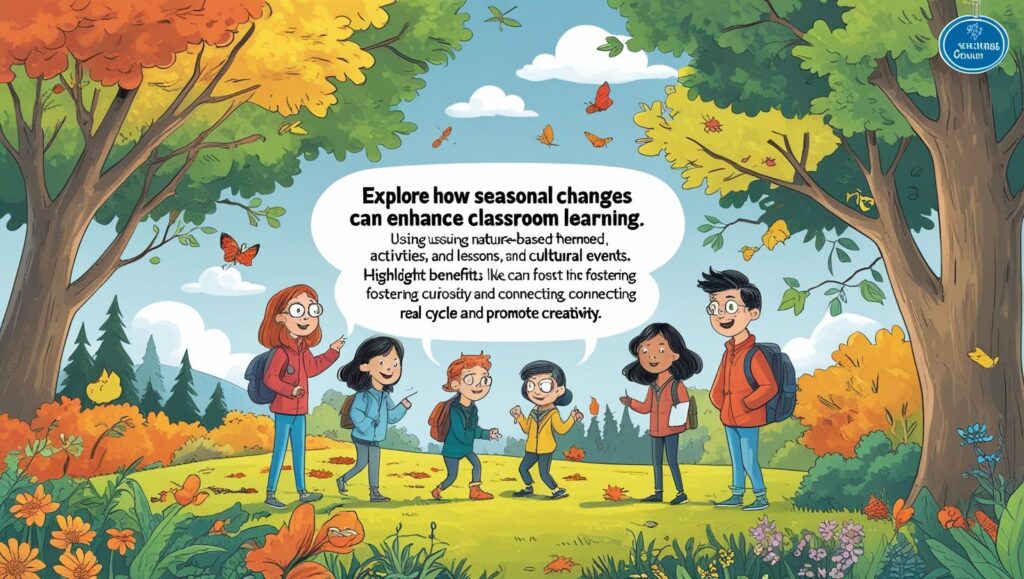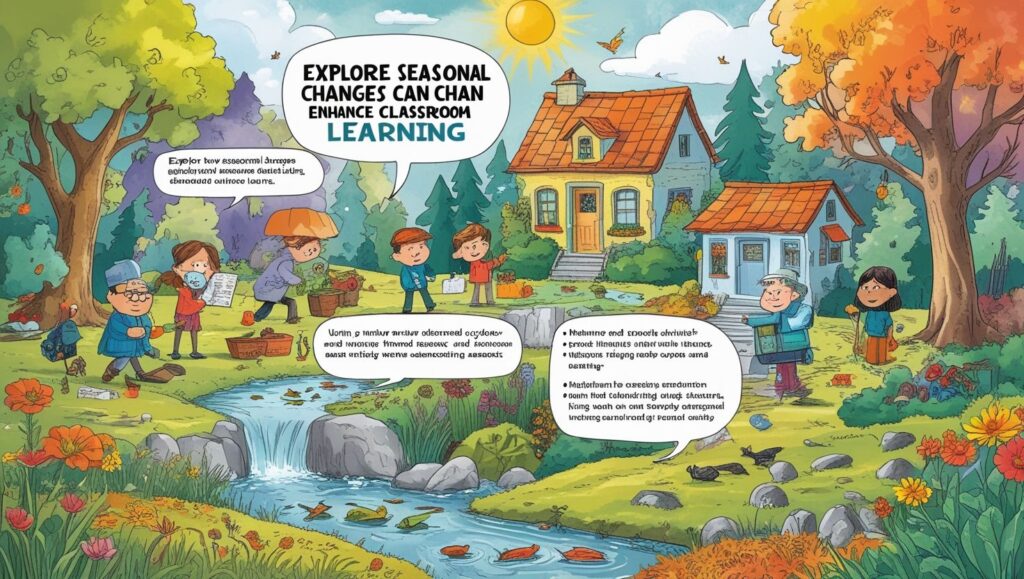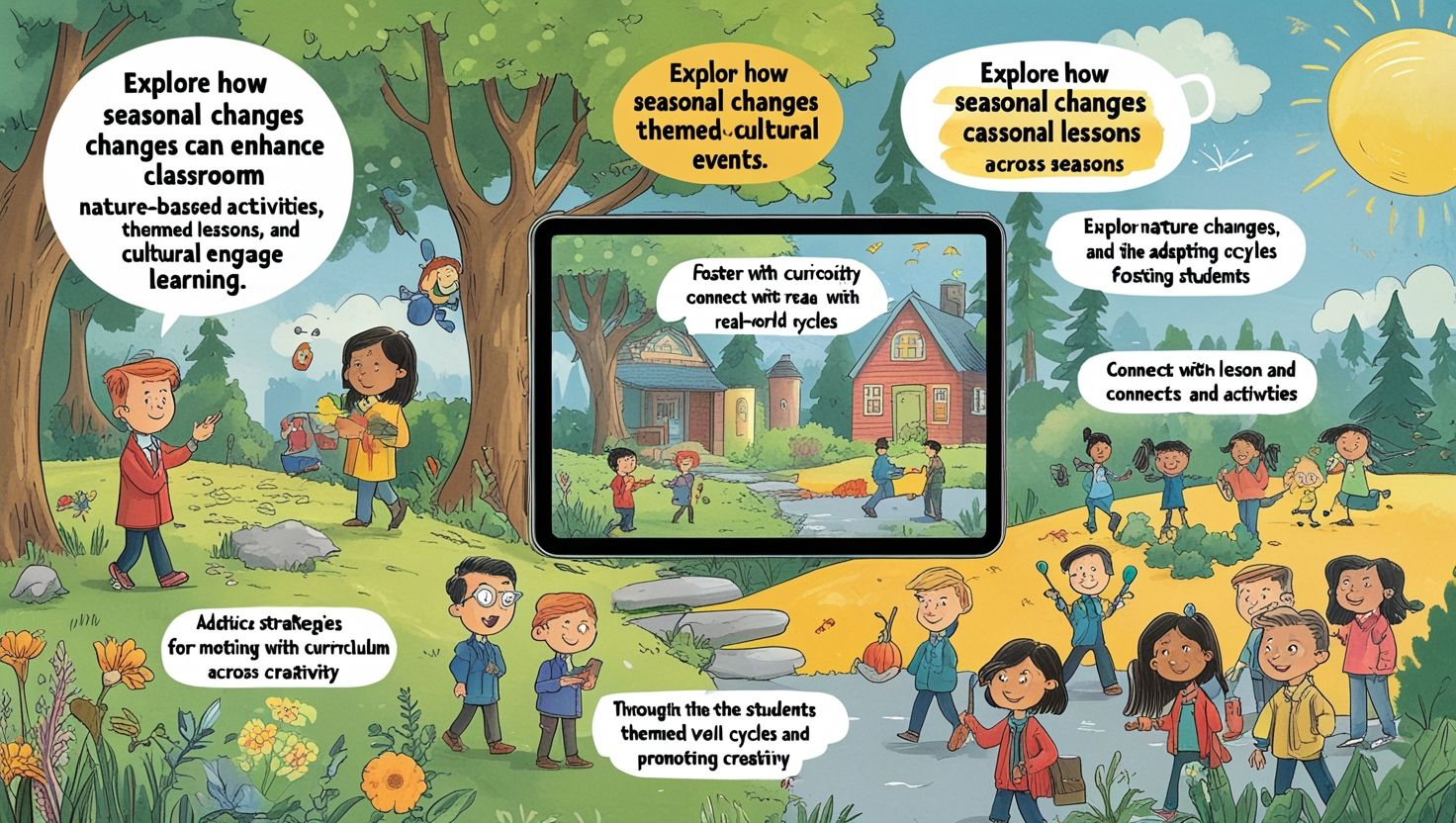Introduction:
Embracing Seasonal Changes in Classroom Learning, seasonal changes bring a vibrant transformation to our surroundings, influencing not only the environment but also our daily lives, including education. In the realm of classroom learning, these changes offer a plethora of opportunities for educators to integrate real-world experiences, interdisciplinary studies, and outdoor activities. By embracing seasonal changes, educators can create dynamic learning environments that cater to students’ diverse learning styles and foster a deeper connection with the natural world.
Understanding Seasonal Changes:
Before delving into the impact of seasonal changes on classroom learning, it’s essential to comprehend the cyclical nature of seasons and their significance. Seasons result from the Earth’s axial tilt and its orbit around the sun, leading to variations in temperature, daylight hours, and weather patterns. These changes manifest distinct characteristics in each season, such as spring blossoms, summer warmth, autumn foliage, and winter snowfall. Moreover, seasons influence ecosystems, agricultural practices, cultural traditions, and human activities, shaping our interactions with the environment.

Integration of Seasonal Themes:
Incorporating seasonal themes into classroom learning can enrich the curriculum and enhance students’ engagement. Educators can design lesson plans that align with the characteristics and events of each season. For instance, during the spring season, biology classes can explore plant life cycles, while literature classes can analyze poems inspired by the rejuvenation of nature. In summer, outdoor activities like nature walks or field trips to botanical gardens can provide hands-on learning experiences. Autumn offers opportunities for studying changes in weather patterns, migration of animals, and cultural celebrations like harvest festivals. Winter months can inspire discussions on adaptation strategies of animals, winter ecology, and cultural festivities around the world.
Interdisciplinary Approach:
Seasonal changes provide a natural framework for interdisciplinary learning, allowing students to make connections across various subjects. For example, studying the science behind changing leaf colors in autumn can involve elements of biology, chemistry, and environmental science. Similarly, exploring the cultural significance of seasonal festivals can integrate history, sociology, and geography. By adopting an interdisciplinary approach, educators can foster holistic understanding and critical thinking skills among students.
Outdoor Education:
Outdoor education offers invaluable opportunities for students to engage with seasonal changes first-hand. Field trips to parks, nature reserves, or farms allow students to observe and interact with the natural environment, enhancing their understanding of seasonal phenomena. Outdoor activities like gardening, bird watching, or star gazing promote sensory experiences and foster a sense of stewardship towards the environment. Moreover, outdoor education promotes physical activity, reduces stress, and stimulates creativity, contributing to overall student well-being.
Cultural Perspectives:
Seasonal changes hold cultural significance across diverse communities worldwide. By exploring cultural perspectives on seasons, educators can promote empathy, respect, and cultural awareness among students. Through multicultural literature, folklore, and traditions, students can gain insights into how different societies interpret and celebrate seasonal transitions. This not only broadens their worldview but also fosters an appreciation for cultural diversity and heritage.

Climate Change Education:
Incorporating discussions on climate change and its impact on seasonal patterns is crucial in contemporary education. As climate change accelerates, it disrupts traditional seasonal cycles, leading to unpredictable weather patterns, ecological imbalances, and socio-economic challenges. Educators can integrate climate change education into seasonal studies by examining its effects on ecosystems, agriculture, and communities. This interdisciplinary approach empowers students to understand the interconnectedness of environmental issues and inspires them to take action towards sustainability.
Conclusion:
Embracing seasonal changes in classroom learning offers a multifaceted approach to education that integrates science, culture, and environmental awareness. By incorporating seasonal themes, adopting an interdisciplinary approach, promoting outdoor education, exploring cultural perspectives, and addressing climate change, educators can create enriching learning experiences that resonate with students’ lived experiences and foster a deeper connection with the natural world. As stewards of education, let us seize the opportunity to cultivate lifelong learners who appreciate the beauty and complexity of seasonal changes.

45p1p8
0tr26j
I’ll immediately grab your rss as I can’t find your email subscription link or e-newsletter service. Do you have any? Please let me know in order that I could subscribe. Thanks.
d70sy4
7wm166
incrível este conteúdo. Gostei bastante. Aproveitem e vejam este conteúdo. informações, novidades e muito mais. Não deixem de acessar para se informar mais. Obrigado a todos e até a próxima. 🙂
whoah this blog is great i love reading your posts. Keep up the great work! You recognize, lots of people are hunting around for this info, you can help them greatly.
page hit buyhacklink.com sonuç odaklı buyhacklink.com https://www.jadekusadasi.com/
en ucuz hacklink buyhacklink.com google hacklink al buyhacklink.com https://www.kusadasiteksex.com/
b590oy
Thank..
Thank..
Thank..
Thank..
Hello thank you.
Thank.
Thank you admin.
Thank.
Thank you admin.
Thank.
Hello thank you.
Thank.
Thank.
Thank you admin.
Hello thank you.
Thank.
Thank.
Thank.
Hello thank you.
Hello thank you.
Hello thank you.
Hello thank you.
Thank you admin.
Thank you admin.
Thank.
Thank you admin.
Some really nice and utilitarian information on this internet site, likewise I believe the design and style contains excellent features.
Thank.
Hello thank you.
Hello thank you.
Thank.
Thank you admin.
Thank.
Thank.
Thank you admin.
Thank you admin.
Thank
Thank
Thank
Thank
Thank
Thank
Thank
Thank
Thank
Thank.
Thank.
Thank.
Thank.
Thank.
Thank.
Thank.
Thank.
Thank.
Thank.
Thank.
Thank.
Thank.
Thank.
Thank.
Thank.
Thank.
Thank.
Thank.
Thank.
Loving the info on this internet site, you have done great job on the content.
Thank.
Thank.
Thank.
Thank.
Thank.
Thank.
Thank.
Way cool, some valid points! I appreciate you making this article available, the rest of the site is also high quality. Have a fun.
Thank.
Thank.
Thank.
Thank.
Thank.
Thank.
Very interesting details you have remarked, thankyou for putting up. “The judge is condemned when the criminal is absolved.” by Publilius Syrus.
This design is incredible! You most certainly know how to keep a reader entertained. Between your wit and your videos, I was almost moved to start my own blog (well, almost…HaHa!) Great job. I really loved what you had to say, and more than that, how you presented it. Too cool!
I’m really impressed with your writing skills as well as with the layout on your blog. Is this a paid theme or did you customize it yourself? Anyway keep up the excellent quality writing, it is rare to see a great blog like this one nowadays..
Thank.
Would love to forever get updated outstanding web site! .
Today, I went to the beach with my children. I found a sea shell and gave it to my 4 year old daughter and said “You can hear the ocean if you put this to your ear.” She placed the shell to her ear and screamed. There was a hermit crab inside and it pinched her ear. She never wants to go back! LoL I know this is totally off topic but I had to tell someone!
I really like your writing style, superb information, thank you for posting :D. “I will show you fear in a handful of dust.” by T. S. Eliot.
Thank.
Thank.
Thank.
Thank.
Thank.
Thank.
Thank.
Wow! Thank you! I permanently wanted to write on my website something like that. Can I include a part of your post to my blog?
I like what you guys are up also. Such clever work and reporting! Carry on the excellent works guys I have incorporated you guys to my blogroll. I think it’ll improve the value of my website :).
Thank.
Thank.
You made some nice points there. I looked on the internet for the issue and found most individuals will approve with your site.
I believe this is among the so much vital information for me. And i am happy reading your article. But should statement on some basic things, The web site taste is perfect, the articles is in point of fact excellent : D. Good process, cheers